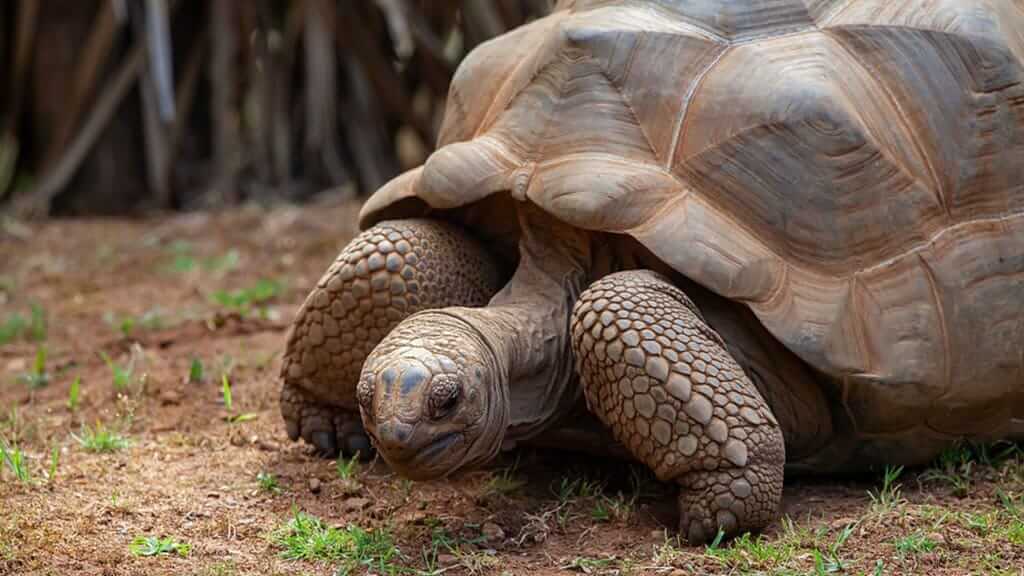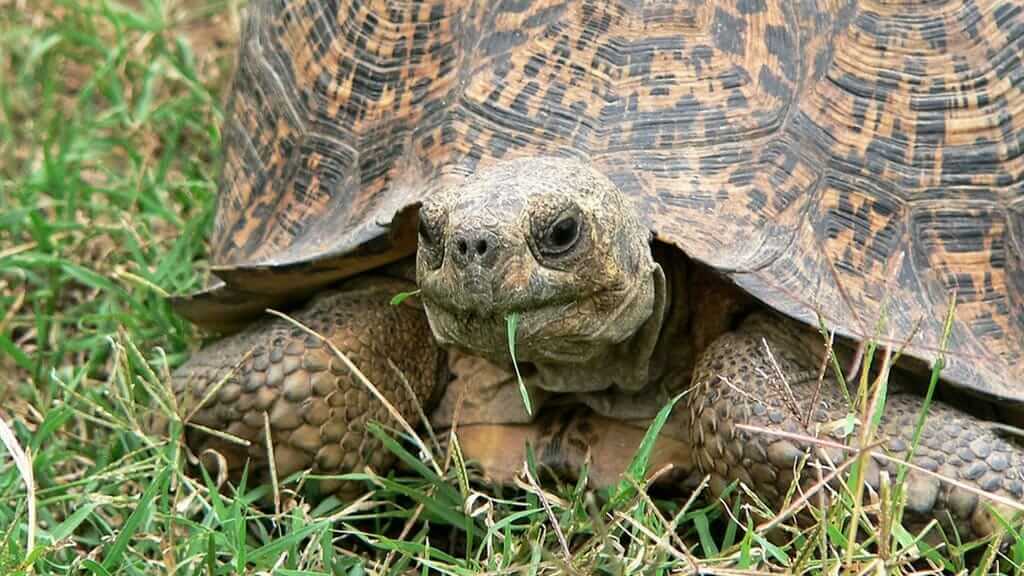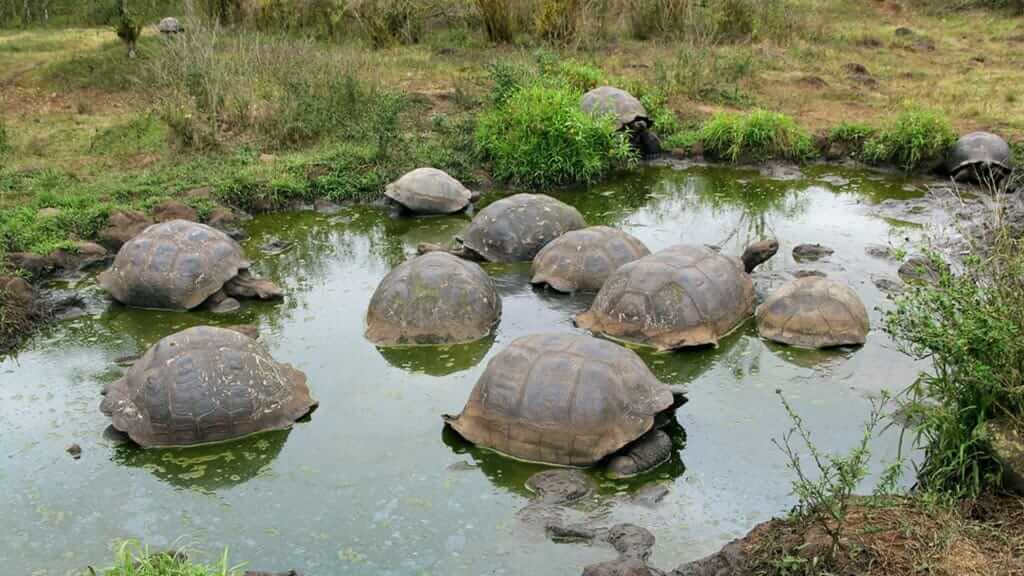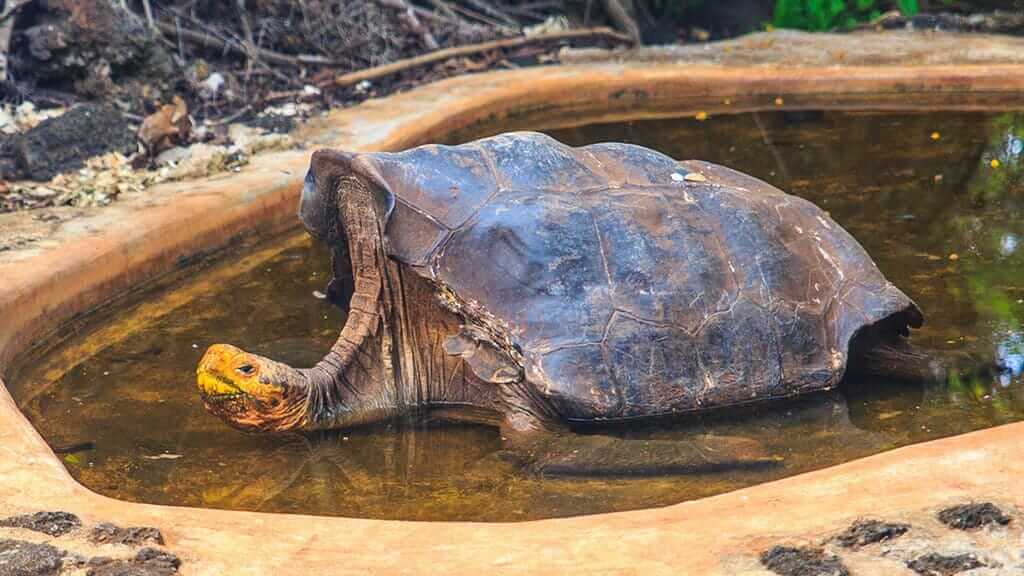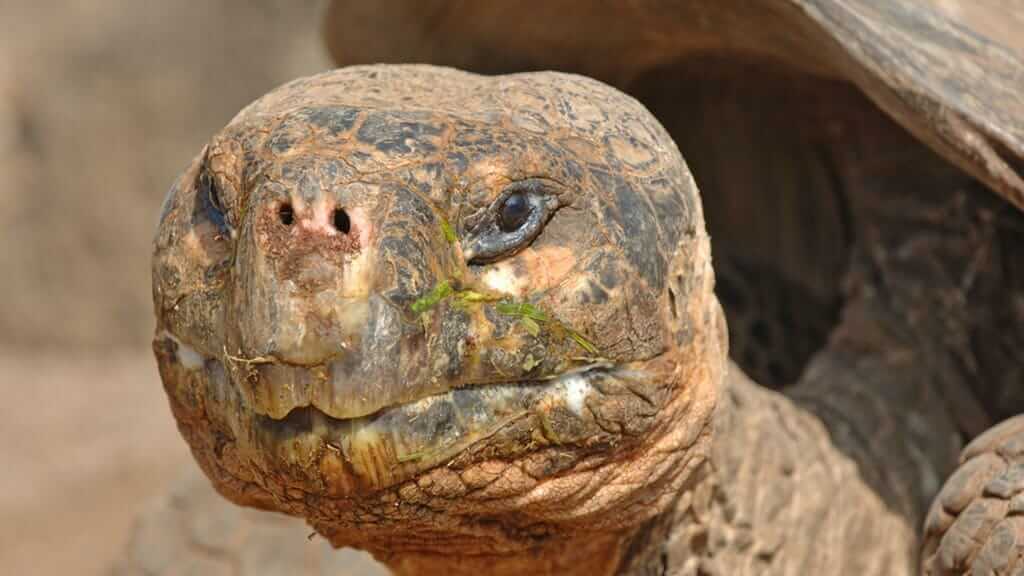The Giant Galapagos Tortoise
The Giant Galapagos Tortoise is an iconic creature that needs no introduction. Whether you’ve crossed paths with them in person at the Galapagos islands, or watched them on Discovery Channel, these gentle giants seem to capture a place in people’s hearts.
Of course, the most striking Galapagos Tortoise feature is their impressive size, but that alone does them an injustice. Galapagos Tortoises also have charisma and character in abundance. They can be surprisingly bold and inquisitive fellas, and boast universal appeal that makes the Giant Galapagos Tortoise so popular with visitors.
There are 15 different Galapagos Tortoise species altogether. All are endemic to the Galapagos Islands, meaning that you can only find them here. Certainly, no Galapagos Islands vacation would be complete coming face to face with a Giant Galapagos Tortoise!
Keep reading for everything you ever wanted to know about the Giant Galapagos Tortoise. Where & when can Galapagos visitors spot them? How did the Galapagos Tortoise first arrive at the islands? How did they adapt and evolve in order to survive? Plus lots of fun Galapagos Tortoise facts and photos.
SECURE YOUR GALAPAGOS TRAVEL
Get a FREE personalised quote todayGalapagos Tortoise Evolution
Before we gently plod too far into the lives and loves of the Giant Galapagos Tortoise, let's answer the obvious questions first.
How Did Tortoises Arrive at the Galapagos Islands?
The Galapagos Tortoise is known to have originally descended from the Chaco tortoise, a regular-sized species from Argentina and Paraguay. But that is just a small part of the evolutionary puzzle. Ask yourself this: how did the Chaco Tortoise originally arrive at volcanic islands over 1000km away from mainland South America?
Let’s start from the beginning. Between 2 and 3 million years ago the Chaco tortoise made an epic journey across the Pacific Ocean. Perhaps some fell into a mainland river or were washed in by flash floods, either way, they followed the river currents out into the open ocean. Tortoises are surprisingly buoyant in water – they float like corks. So they could have bobbed along themselves or perhaps have survived on floating foliage.
Importantly, tortoises can survive up to 1 year without food or water, so their ocean-bound adventure would pose no immediate threat to their survival.
What are the odds that a floating tortoise might wash up on Galapagos shores? Actually, surprisingly high. Ocean currents from the South American mainland drift and converge conveniently at the Galapagos islands.
How & Why Did The Galapagos Tortoise Evolve?
So, we can now imagine tortoises washing up on the Galapagos Islands. But, the reality is that different individual tortoises would have washed up onto different islands of the archipelago.
All Galapagos islands are of volcanic origin, but each has distinct habitats, plants, and tortoise food sources. On one island the tortoises find lush green highlands with mud pools and plentiful food to eat at ground-level. While, on another island, less fortunate tortoises find a more barren habitat of lava rocks, with scarce food and a tougher challenge to survive.
It is at this point that the Galapagos Tortoise story starts to get more interesting and Natural Selection comes into play. On the first island, our tortoises can eat freely and easily. Their typical tortoiseshell is dome-shaped, which is no hindrance to survival because they can eat ground-level plants that are found everywhere. Life is a breeze.
Meanwhile, life for the tortoises on the barren island is much tougher. The Galapagos Tortoises here find no ground-level plants or shrubs. The only source of food is found on Opuntia Cactus plants, with fruit and pads hanging from high branches. Some of the tortoises cannot reach this food and naturally perish. Only tortoises with long necks and slightly curved shells at the front can extend reach high enough to eat. These tortoises naturally have a higher survival rate.
So, we have a situation where Galapagos Tortoises with the long neck and saddle-shaped shell trait are the most likely individuals to survive. When these tortoises then mate they are likely to pass those same genetic traits onto their hatchlings. Now fast forward hundreds of thousands of breeding generations, and the advantageous shell curve and long neck have been passed down to young tortoises many thousands of times. Each time the shell curve is enhanced slightly more to further enhance survival chances.
Eventually, as you can see, we have two very different Galapagos Tortoise populations on the two different islands. Dome-shaped shells continue to dominate where ground food is abundant. Curved shells shaped rather like a saddle have become the norm on the barren island.
The tortoise populations on our two islands are now sufficiently different that the tortoises are scientifically recognized as unique and separate species. This is a great example of evolution in action. A species will adapt over time to local habitat and environmental conditions, where useful genes and traits are passed down by survivors, maximizing the chance of future species survival.
If we extrapolate our example to include all of the different islands in the Galapagos archipelago, we can begin to understand how 15 different Galapagos Tortoise species evolved over time.
Why Do Galapagos Tortoises Grow So Large In Size?
All of this brings us to the final question in our Galapagos Tortoise story - how and why did the Galapagos Tortoise grow to be so large?
Scientists believe that this is due to the process of Island Gigantism. Simply put, creatures that live in very isolated locations (for example, remote islands) with ample food sources and no predators are able to grow to larger sizes than they would in their regular, more constrained environment.
The Galapagos Islands are the perfect place to witness this phenomenon. Once past a certain age into adolescence, the Galapagos Tortoise faces no threat of predation and has few competitors for their food sources. So, they are naturally able to live longer and grow much larger than regular tortoises that we are used to calling pets.
GET FREE ADVICE
From a Galapagos destination expert todayHow to See Giant Tortoises at the Galapagos?
Today the Giant Galapagos tortoise population size is estimated at between 15 and 20 thousand individuals, split across different islands of the archipelago.
The easiest way to see them is in captivity at Tortoise Breeding Centers on Santa Cruz, Isabela, or San Cristobal islands. The most famous center is the Charles Darwin Research Station in Puerto Ayora. These centers play a vital role in Galapagos Tortoise Conservation, protecting eggs and hatchlings from predation by introduced species like dogs, cats, pigs, and rats. Adult Galapagos Tortoises have no natural predators, so once the babies grow large enough they are released into the wild. Visitors can see the complete tortoise life cycle in action – from incubating eggs to tiny babies, energetic adolescents, and large adults who drive the breeding cycle.
Visitors can also observe giant tortoises in their Natural Habitat. Highland ranches like El Chato on Santa Cruz are home to Giant Tortoise populations that roam freely in dense vegetation, with mud pools to cool off in. San Cristobal's Galapaguera Center offers the best of both worlds - with giant tortoises roaming a large area, and babies kept in safe captivity.
It's possible to visit both breeding centers and highland ranches as part of either a Galapagos Cruise or a Galapagos Land Tour.
When is the Best Time of Year to see Galapagos Tortoises?
The best news is that Galapagos Tortoises can be spotted all year round on the islands.
In terms of behavior, the Galapagos Tortoise breeding season is usually in the dry season (June to November) in the highlands, while eggs are laid in the lowlands during the wet season (January to April).
Whether you see tortoises at a breeding center or in the wild, it's possible to clearly observe the contrasting shell shapes between species. Of course, your naturalist guide will be happy to identify sub-species correctly for you and explain their adaptations in more detail.
For more information about Galapagos Tours to see Giant Tortoises firsthand (as well as many other fascinating bird and mammal species), Contact a member of our team or call our toll-free numbers.
15 Giant Galapagos Tortoise Species
In total 15 different Giant Galapagos Tortoise species have been identified, all from the genus Chelonidis. Each species population lived in a unique place from one another – either on different islands or in the case of Isabela island populations were separated by unpassable lava flows. In general terms, the species fall into 3 types of Galapagos Tortoiseshells: Saddle-back, Dome-type, and Intermediate.
Today 12 of the 15 species are still alive and well at the Galapagos islands. These are native to Española, Fernandina, Santa Cruz (2 species), Santiago, Pinzon, San Cristobal, and Isabela (5 species on each of Wolf, Darwin, Alcedo, Sierra Negra and Cerro Azul volcanoes).
3 species are unfortunately extinct - those from Floreana, Santa Fe, and Pinta islands. Giant tortoises were long thought to be extinct on Fernandina too, until a single female (named Fernanda) was discovered there in 2019. Subsequent scientific tests have proven Fernanda to be the first Chelonoidis Phantasticus (Fantastic Giant Tortoise) sighted since 1906. The race is now on to see if more of her species have been roaming a solitary life in remote areas of Fernandina; the ultimate goal would be to set up a breeding program to rescue this species. This echoes the story of Lonesome George, the last surviving Pinta tortoise who was discovered all alone in 1971, but sadly passed away in 2012 as the last in his line.
So, as you can see, the Galapagos islands still hold many secrets, and the Giant Tortoise extinction list is not completely carved in stone.
Galapagos Tortoise Conservation
Giant Tortoise conservation is a hot topic in Galapagos. Of course, nobody wants to see further species extinction, yet today we find 6 species critically endangered, 3 endangered, and 3 vulnerable on the IUCN Red List.
In the past, it was whalers and pirates who depleted tortoise numbers for food. Population numbers declined from over 250,000 back in the 16th century, to just 3000. Floreana was a particularly popular stopping-off point for ships due to the island’s source of fresh water. Whalers would also stock up on tortoise meat and oil for their onward voyages, resulting in the complete extinction of the Floreana giant tortoise.
Today the surviving Galapagos tortoise species face very different threats. Invasive species introduced by humans (cats, dogs, pigs, goats, rats) destroy nesting sites and eat eggs or baby tortoises. This combined with habitat destruction puts Galapagos Tortoise populations under severe stress.
So, what is being done to help the modern-day survival of the Giant Galapagos Tortoise?
Galapagos Tortoise eggs and hatchlings are in particular need of a helping hand, as they are in the most risky phase of tortoise development. At tortoise Breeding Centers, Galapagos Tortoises are raised in captivity, keeping them safe until large enough to defend themselves from predation in the wild. These projects have impressive success rates and are key to the future of the Galapagos Tortoise populations. On San Cristobal Island the breeding center has been so successful at repopulation that the center is no longer required to assist baby tortoises.
Perhaps the best-known Galapagos Tortoise Conservation success story is that of Diego. When the Española (Hood) tortoise population dropped to just 15 individuals it became clear that the species was in trouble. So Diego, a healthy adult who had been living at San Diego Zoo, was shipped back to Galapagos with a very important job to do. Diego became a famous stud tortoise, fathering over 800 baby hatchlings with Española females. All have since been released onto Española island to repopulate and save their species from extinction. Finally, in 2019, Diego was also released back onto his original birthplace island, to enjoy a well-deserved retirement surrounded by his kids and grandkids.
In other important projects, the Galapagos Conservancy also supports the control of invasive species, habitat recovery, and mitigation of potential human-tortoise conflict.
Everything You Ever Wanted to Know About the Giant Galapagos Tortoise
How Long Does a Galapagos Tortoise Live?
Galapagos Tortoise lifespan varies - they often live past 100 years in the wild, or as much as 170 years in captivity. The age of an individual tortoise can be estimated by counting the rings of a shell scute.
How Much Does a Galapagos Tortoise Weigh?
The Giant Tortoises found in the Galapagos are the heaviest living species of tortoise on the planet! The largest ever recorded Galapagos Tortoise weight was over 400kg (880 lb). Galapagos Tortoises can reach impressive lengths of close to 2 meters (6 ft).
What Do Galapagos Tortoises Eat?
Like all tortoise species, they are herbivores, consuming a diet of cactus fruit or pads, grass, leaves, lichen, wild berries, or other fruits. At the Galapagos, they are also able to digest poison apples. Giant Tortoises receive most of their moisture from dew and plant sap, which they can store in their bodies for long periods of time, helping them to survive dry periods.
Galapagos Tortoise Habitat
Galapagos Tortoises prefer the lush and cool highlands, surrounded by green vegetation, and close to mud pools. As cold-blooded creatures, they bask in the early morning sun to warm up and cool off in mud pools around midday. Giant tortoises only migrate down to coastal regions to lay eggs during the wet season. They use the same migration paths generation after generation, along well-defined Galapagos Tortoise highways.
Giant Galapagos Tortoise Mating
Galapagos Tortoise mating is a surprisingly aggressive affair. Adult males will fight one another for dominance of females, stretching out their necks and even rising up on hind legs to gain height advantage over rivals. After much hissing and occasional biting the winner is defined by the highest held head. The victor then enjoys the spoils, mating with his female(s) of choice amidst much crunching of shells and loud groaning. It can be quite a spectacle for visitors to behold.
After mating comes a migration to nesting sites. Okay, maybe not as famous as the Wildebeest migration on the Serengeti, but yes the Galapagos Tortoise Migration does happen – just at a slower pace! At the start of the wet season in December, adult males and females start a slow trek from the lush highlands down to the coast. This is a long trip, taking as long as three weeks to cover a distance of under 4 miles on Santa Cruz island. Why do giant tortoises undertake this arduous journey? The coastal plains are the most suitable place to dig nests and lay eggs. During the dry season (May/June to November) there is not enough tortoise food on the coast as vegetation dries up. So these intelligent creatures wait for the first rains before beginning their slow and steady plod. A deep nest is dug into sandy soil, and as many as 4 clutches of 12-16 tortoise eggs can be laid each season. Job done, the adults migrate back up to the cooler highlands.
Galapagos Tortoise babies emerge from their nest after 4 to 8 months, instinctively digging their way to the surface. Their first 10-15 years of life are spent in the same lowland area of birth. These early years carry many risks for inexperienced tortoise hatchlings, who measure just 6cm long. Natural predators like the Galapagos hawk, and introduced species like pigs, rats, and cats are always on the lookout for an easy meal. Sometimes tortoises will even fall into crevasses, or roll onto their backs and starve to death, unable to right themselves to escape. It is for this reason that the Galapagos Tortoise breeding centers lend a helping hand, gathering up eggs and incubating them in a safe environment.
Fun Giant Galapagos Tortoise Facts
• The Galapagos islands were originally named after the Giant Tortoise. Early Spanish sailors who landed at the archipelago spotted these unusual creatures, observing their strange saddle-shaped shells. The old Spanish word for a saddle is Galapago, hence the islands were Christianed "Galapagos".
• Galapagos Tortoises were taken aboard ships by pirates and whalers who used the islands to restock their food and water supplies. Tortoises were the perfect food supply as they could survive long journies ensuring a regular supply of fresh meat for the crew.
• Even Charles Darwin and his crew captured 30 live tortoises for food purposes, although he did also take 4 baby tortoises as pets. In his diary, Darwin referred to a young Galapagos Tortoise named James who joined the crew of the Beagle for their homeward voyage. Little is known about the life of James from that moment on, but his remains are now housed at the Natural History Museum in London.
• Galapagos Tortoises share a symbiotic relationship with the Galapagos Finch. Finches crawl on and around tortoises, eating bugs and parasites. Both species benefit as the finch gets a tasty meal, and the tortoise is cleaned of irritating parasites.
• The gender of Galapagos Tortoise hatchlings depends on the heat of their eggs during incubation. Warmer temperatures produce female hatchlings (Hot babes), while cooler temperatures produce males (Cool dudes).
If you enjoyed this post, why not read more about other iconic Galapagos species: Galapagos Birds & Galapagos Animals.
Book with The #1 Trusted
Galapagos Travel Agency
In Conclusion, the Giant Galapagos Tortoise is one of the biggest crowd-pleasers on the islands. Truly no Galapagos visit would be complete without crossing their path. There is a big difference between seeing adult Galapagos Tortoises in the wild and babies in captivity, so try to include both in your trip itinerary. Above all spare a thought for those first Chaco tortoises that floated all the way out here from mainland South America. Imagine their incredible journey and the new life they found on different islands. If only tortoises could speak, the Galapagos Tortoise species that we find today would certainly have a remarkable tale to share.




